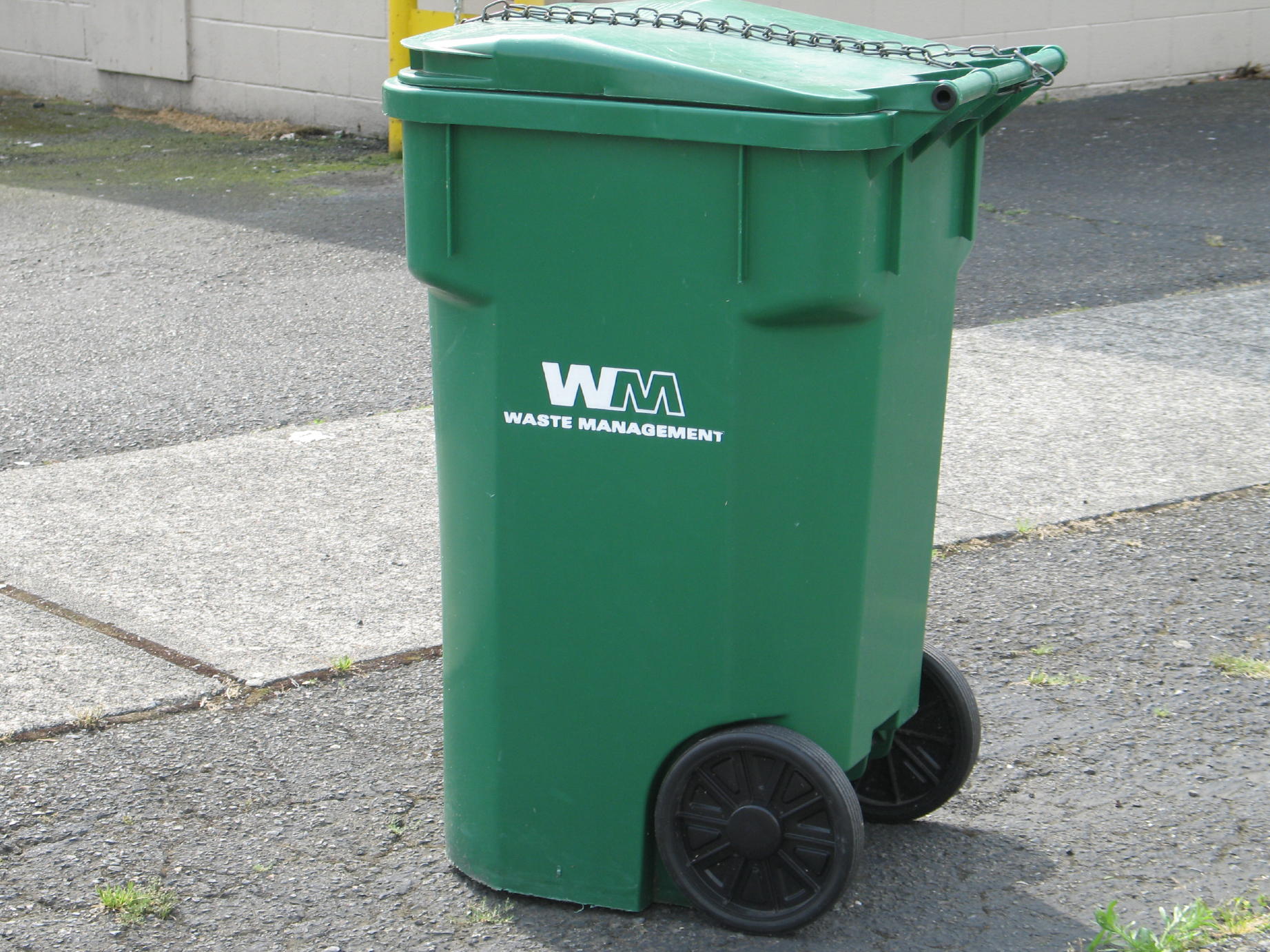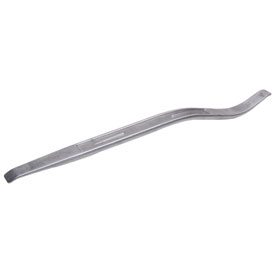It costs a whopping $13 and basically acts as a 3rd hand when trying to put a wheel on a rim. Not having one, here's what I used:
+
My emptied-that-morning recycle bin was no match for the leverage I was applying to the opposite tire bead and tipped over. The tire lever that had been wedged under the bin torpedoed into my temple. Although I don't recall there being a speech center in that area of the brain I must somehow be wired differently, because I suddenly developed an acute form of tourettes.
So why all this bother? Well first I needed a DOT tire on the rear of my XR, and since I finally found one for a 19" wheel, I had that to swap out. It's a Shinko Trail Pro 255. I installed it with a Tubeliss system, thereby eliminating the need for a tube. I'll eventually review both once I've had a chance to try them out.
Also, if you'll recall from an earlier post, my wife's recently acquired DR200 was in sorry need of new shoes. The stock Bridgestone Trailwings still had plenty of tread left on them (after 950 miles they'd better), but by looks alone I'd classify them as 20/80's - that is, 20% off road, 80% on road. Since we avoid pavement like its Mexico, clearly new tires were needed. Also these tires have the ominous nickname of Deathwings. Not exactly confidence inspiring.
The problem: Short wife and amazingly small stock tires. On one hand its great that the stock wheels are 21" front and 18" rear - that's pretty much the standard size for offroad and dual sport motorcycle tires. But when the stock tires have a sidewall height measured in nanometers, you're going to have a hard time finding anything that won't raise the seat height. If you want to go on organized dual sport rides that potentially might check your tires to make sure they're DOT legal, that narrows the field even further. I ended up compromising with a 90/90-21 Dunlop D606 up front for a net gain of about 1.5" in height over the stock tire. That's a pretty big increase but its a highly recommended tire and a good price (and it didn't look 1.5" taller in the store before it was mounted).
I did better on the back. For a loss of about .05" compared to stock, I mounted a 110/80-18 Pirelli MT-21. Seen here with the old Deathwing on the left.
Most people should read that and think "wuh?". That brings me to my rant of the post.
Metric tire sizes: A lesson in stupid
The 1st number you read is the width of the tire in millimeters, the second is the aspect ratio, and the third is the wheel size it fits. Ok width is easy, but most people don't know jack about aspect ratio unless they mess with wings or sails. Basically in this case its height as a percentage of width. So a 110/80-18 tire is 110mm wide, 80% of 110mm tall at the sidewall, and fits an 18" wheel. My question is: why even bother with the percentage at all? Anyone that looks at it isn't thinking "oh the tire is 80% as tall as it is wide", they're saying "WTF is 80% of 110mm and will it fit?". Tire makers went to all of the trouble of putting a 2nd number there, so why not make it as useful as possible? Label it 110/88-18, and don't make it a stupid math problem. Proof that tire sizes are the invention of a disgruntled 5th grade math teacher.
If you think that is pure idiocy, you'd almost be right. Standard tires don't even bother with sidewall height. A tire will just say 4.00x18. So that's 4.00" wide, fits an 18" rim, and 'WTF do you care how wide it is'. Buy it and when it doesn't fit, buy a smaller one, BUT BUY AMERICAN! (Again).
I swear how do these people breathe?






No comments:
Post a Comment